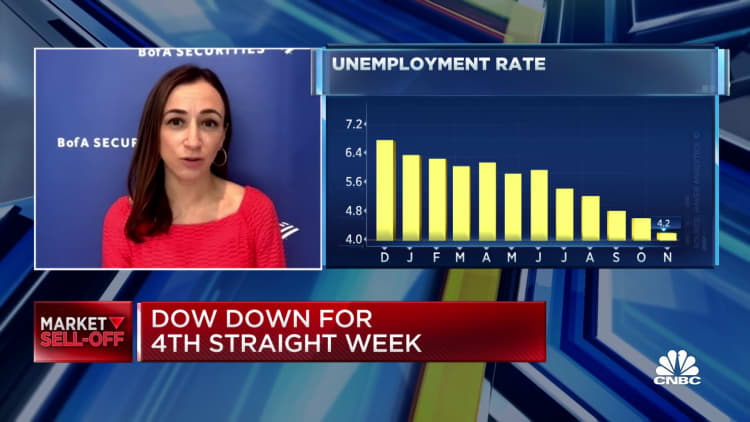Claims for unemployment benefits dropped to their lowest level in decades last week. However, that statistic is getting skewed by pandemic-era labor distortions, making it seem a bit rosier than reality, economists said.
There were 184,000 initial claims (a proxy for benefit applications) the week ended Dec. 4, the U.S. Department of Labor said Thursday. That's 43,000 fewer than the week prior and the lowest level since Sept. 6, 1969.
The report tops another eye-popper just two weeks earlier, when claims also fell to a five-decade low.
But these data points include a seasonal adjustment, which controls for layoff patterns at various times of year. (For example, layoffs generally rise in construction and agriculture in the colder months.)
Without that tweak, unemployment claims rose by about 64,000 last week (or 29%), to a total 281,000, according to the Labor Department. (This figure represents the true, unadjusted number of benefit applicants.)
How can the seasonally adjusted and unadjusted data move in opposite directions?
More from Personal Finance:
Considering a Medigap policy? Here's what to know
Tips to help pay off those holiday bills before they pile up
1 in 5 Americans are saving less for retirement due to Covid
Basically, the Labor Department expected a bigger post-Thanksgiving jump in benefit applications and adjusted accordingly. (It anticipated 42,000 more claims.) That showed up as a large decrease in seasonally adjusted claims.
These seasonal adjustments are standard practice, but the pandemic is complicating the labor dynamic. High Covid case levels fueled by the delta variant — and now concerns over the omicron virus strain — may be sidelining workers or affecting things like child care that affect one's job prospects, for example.
"It's not obvious why the seasonal adjustment has struggled in the last few weeks, but weekly [seasonal adjustment] is difficult even in normal times," said Daniel Zhao, a senior economist at career site Glassdoor.
Similar volatility in unemployment claims is likely throughout December and into January, generally a time when seasonal layoffs and furloughs are elevated, Zhao said.
Steady improvements
This isn't all to say the labor market seems strong when it's really weak; it more underscores that the historically low level of unemployment claims shouldn't necessarily be taken at face value.
In fact, the labor market has been steadily improving.
Weekly initial claims for unemployment benefits (on an unadjusted basis) are about the same as their pre-pandemic level in December 2019. Initial claims for unemployment benefits at the same time last year were more than three times their current level. The U.S. unemployment rate dropped to 4.2% in November, the lowest since February 2020.

Employers are reluctant to lay off workers amid a near-record level of job openings. (There were more than 11 million openings in October, the Labor Department said Wednesday.)
The number of employees who quit their jobs eased off its September record, but remained elevated as workers see ample job opportunity and bargaining power.
"While the latest [unemployment claims] data should be taken with a grain of salt given seasonal adjustments, we may be entering a stretch when lower-than-average layoffs continue until the 'Great Resignation' fades," said Robert Frick, a corporate economist at Navy Federal Credit Union.


